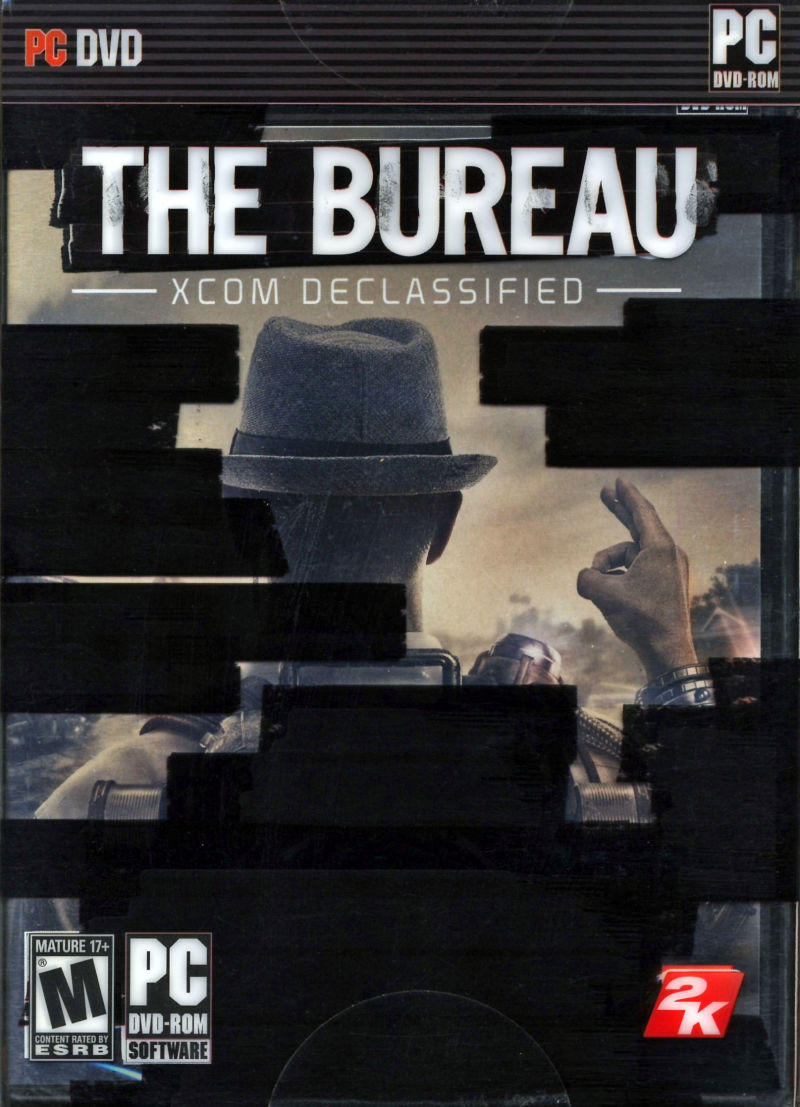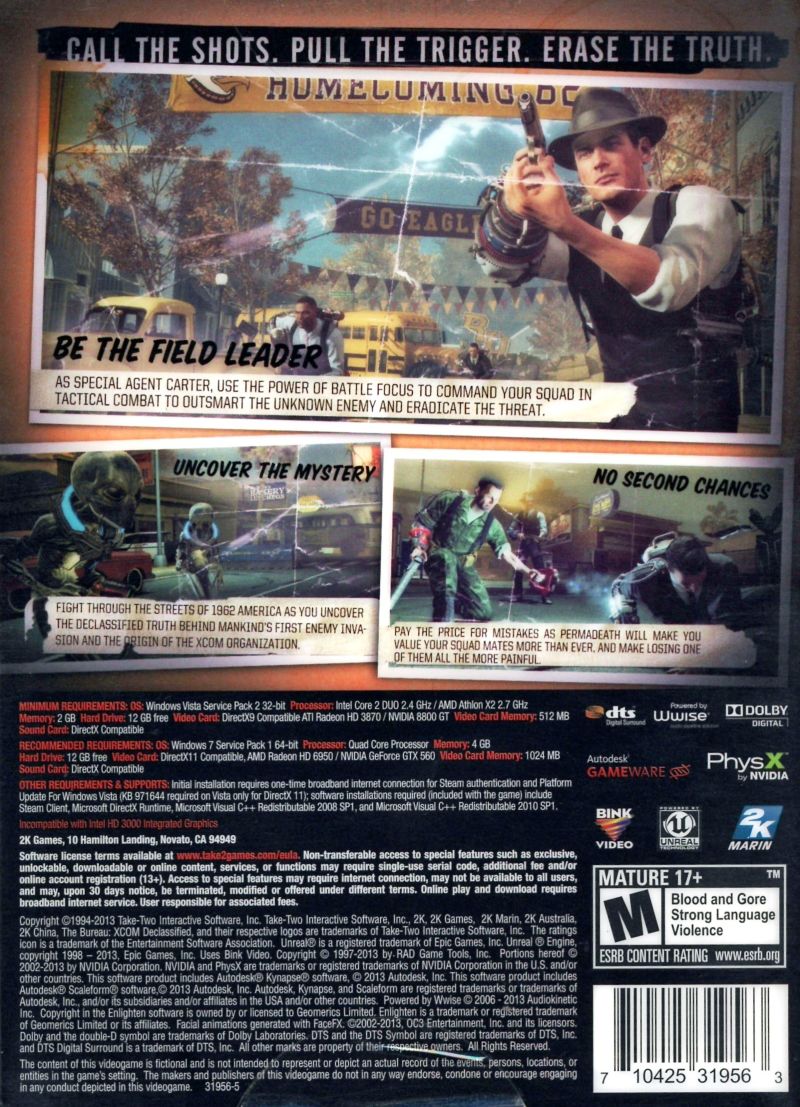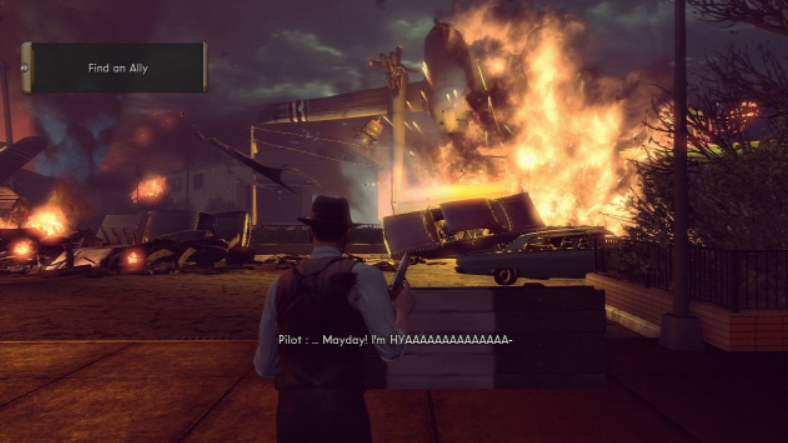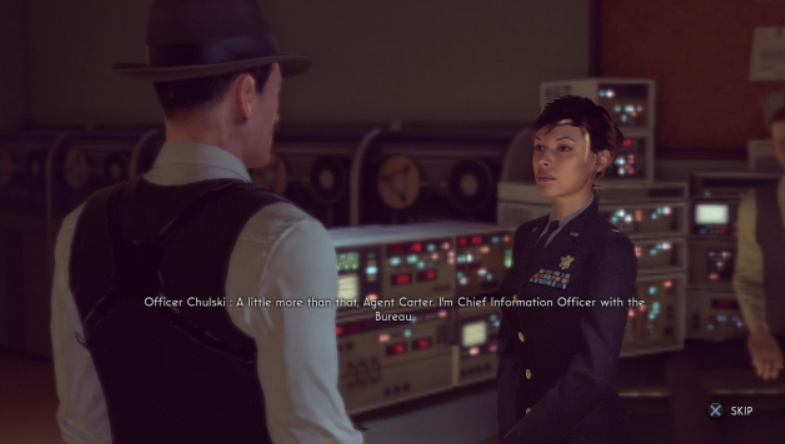A third-person shooter, revolving around the Bureau of Operations and Command, also referred to as XCOM. William Carter, once a successful CIA agent, gets recruited by the XCOM bureau to stop an alien invasion after unknowingly ending in the middle of it. This is all set to the background of a 1960’s atmosphere.
During tactical fights one can use “the Battle Focus system” to slow down time and think of strategic moves to place your agents and to turn the tide in your advantage. If one of your agents looses their live they will not return back in the game (permadeath), making strategy in coming out alive of a skirmish that much harder. Every agent that comes along missions can be upgraded and be helpful with their own perks and specialties. You go on every mission with two other agents who, as well as you, gain experience by taking on alien invaders. Basic agent types are commando, sniper, soldier and engineer, which are limited to the weapon they are most skilled with, meaning sniper rifle, machine-gun, a pistol or a shotgun. As you later uncover and research enemy weapons, you’ll be able to assign that to them as well.
All agents are equipped with a special device that gives them abilities to aid in the combat, and each of these abilities can be upgraded, but many are mutually exclusive. While other agents can rank up to level 5, William Carter can reach level 10 and have more destructive abilities such as summoning alien Silacoid or alien-style drone to fight at your side, and even use your mind-control to make enemy combatant fight for you, even the elites and commanders. Most of the game relies on cover tactics and issuing commands to your agents to flank the enemy or use their own abilities to help you. You can also heal your agents and yourself, thus preventing a fatally wounded agent from dying, even if that agent is you, in which case you must issue a command to one of your comrades to come and revive you while there is still time.
Between missions you’ll be exploring the XCOM base and talk to other characters which may open minor sub-quests around the base. During initial dialogues you may be prompted with various choices which may slightly affect certain things in the game, such as deciding to cover up the conspiracy or bring it to light, while ending dialogues let you inquire about stuff to get more info about enemies, research and other events. Mission map show news from the front, minor missions which lets you gain additional experience, agent missions on which you can send your agents to acquire new personnel or technology, and primary missions that progress the story.
Cover Art:
Screenshots:





